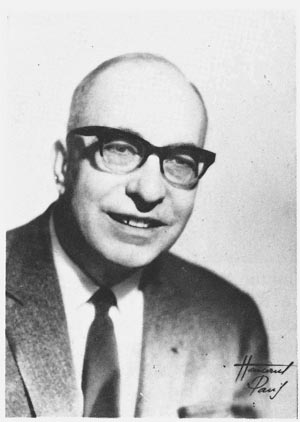
Stéphane de Brommer (1905-1972)

Stéphane de Brommer was born in Paris on 23 February 1905. He attended grammar school in Bordeaux and was admitted to the famous Ecole Spéciale Militaire (Special Military School) of St-Cyr in 1925. He graduated in 1927 as an infantry officer and in 1931, upon his request, was transferred to the Service Géographique de I'Armée (Military Geographical Service), where he took part in topographical surveys in Provence and in Syria.
From the outset he demonstrated particular interest in reproduction and printing techniques and in 1933 he was appointed to the Cartographic Section of the Service Géographique. One year later he was put in charge of its Section of foreign relations. In 1940, when the Military Geographical Service was transformed into the civil Institut Géographique National (IGN), he was employed in the division of Geographic Engineers. For many years he directed with authority and competence the Reproduction and Printing Department of the Institute. In 1957 he was called to serve at Direction level, where he was responsible for dealing with problems related to cartography. In 1964 he was appointed Director of the Ecole Nationale des Sciences Géographiques of the IGN, a position that he held till his retirement in 1971. Convinced of the good cause of mapping and its important function in modern society, he devoted much of his energy, enthusiasm and organisation talent to promoting national and international cooperation in cartography. He was one of the founder members of the International Cartographic Association, which he served as its Vice-President for eight years. As chairman of the Commission on Education (1964-1972) he succeeded in winning the financial support of UNESCO, which enabled him to do innovative work for the Association. The publications of the commission and its repeated presentations to plenary conference sessions considerably stimulated the growing awareness of the significance of a responsible education in cartography. He was an indefatigable worker with great knowledge and experience in technical matters. As a good organiser, he managed to find time to attend courses on new developments in photography, reproduction and printing, adhering to the principle that it is necessary to have a full knowledge and understanding of the matter in question before one can delegate the work to others. Moreover, he was an excellent teacher. The students of the Ecole Nationale who were fortunate to have him as their guide, admired his teaching flare and appreciated the solid content of his lessons. International relations played an important role in de Brommer's life. He represented his country and the Association with style and tact. At the same time he was amiable and charming and with his fine sense of humour he was greatly liked. Participants of the UNESCO Seminars in the 1960's have nostalgic memories of the social evenings organised by Madame and Stéphane de Brommer in their home in Avenue Emile Deschanel. Stéphane passed away on 15 December 1972, victim of a heart attack.
Imhof could look back on a rich and fulfilling life, surrounded by friends, dedicated students and former pupils, as well as silent admirers. His robust health made it possible for him to remain active to a ripe old age. At the age of 82, he finished the Swiss Atlas; as an 85 year old, he put the finishing touches to an impressive 1:200 000 relief map of Switzerland and, shortly before his death, he wrote the article Glanz and Elend der Kartographie (Glory and misery of Cartography) that was published, posthumously, in the 1986 International Yearbook of Cartography, a publication which he initiated in 1961. It remains for us to express our gratitude for all that Imhof stood for, brought about, and passed on to us all. The best way of paying tribute to his memory, is to hand on his theories and rules to those, who are now on the threshold of the computer age and who will be able to use them to combat the limitations of electronic image formation.